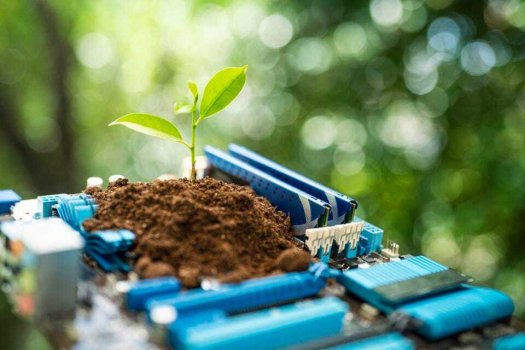K
Kathleen Martin
Guest
Web3.0, sometimes abbreviated as Web3, is bringing about an era of the internet that will consist of a more decentralized infrastructure, as well as a metaverse where users want more control over their data and online privacy. The companies that will succeed in the Web3.0 era will be the ones that create brand new models to solve or prevent some of our most entrenched problems.
Digital privacy, security and the unlikely contender of excessive carbon emissions are three of today’s problems that can be addressed using Web3 tools. Not only that but they can all be improved upon using the same platform. As we sit here today, very few people are worried about the carbon emissions created by the tens of billions of digital attachments sent around the world, but from my perspective, as someone who works at a blockchain smart document company, I see the amount of needless energy waste already taking place.
First, let’s look at the data. Studies show an average email attachment emits about 50g of CO2 into the atmosphere (from Mike Berners-Lee’s book How Bad Are Bananas?: The Carbon Footprint of Everything by Mike Berners-Lee ). This is largely due to the electricity required by the elaborate infrastructure of data centers around the world that process and store each message. Further calculations estimate the average office worker receives about 6,000 attachments that they ignore each year. This all adds up to the equivalent of a passenger car driving 1,093 miles for each office worker. Those numbers don’t even include the many more attachments that workers do open, so the total carbon impact is much higher.
The good news is we don’t have to keep going down this path. Blockchain platforms and immutable ledgers already have a preventative solution built right inside. By being able to access files—be they documents, contracts or multimedia—from a type of access point, which people can be sure hasn’t been tampered with, we can slash the amount of carbon created from sending attachments. I’ve taken to calling this concept the “single source of truth”—the idea that we can create immutable, secure records and send people to a single source instead of generating multiple copies of the original and sending those copies out into the world.
Continue reading: https://www.forbes.com/sites/forbestechcouncil/2022/10/03/why-web30-is-more-sustainable-than-you-think/?sh=208d27946e71
Digital privacy, security and the unlikely contender of excessive carbon emissions are three of today’s problems that can be addressed using Web3 tools. Not only that but they can all be improved upon using the same platform. As we sit here today, very few people are worried about the carbon emissions created by the tens of billions of digital attachments sent around the world, but from my perspective, as someone who works at a blockchain smart document company, I see the amount of needless energy waste already taking place.
First, let’s look at the data. Studies show an average email attachment emits about 50g of CO2 into the atmosphere (from Mike Berners-Lee’s book How Bad Are Bananas?: The Carbon Footprint of Everything by Mike Berners-Lee ). This is largely due to the electricity required by the elaborate infrastructure of data centers around the world that process and store each message. Further calculations estimate the average office worker receives about 6,000 attachments that they ignore each year. This all adds up to the equivalent of a passenger car driving 1,093 miles for each office worker. Those numbers don’t even include the many more attachments that workers do open, so the total carbon impact is much higher.
The good news is we don’t have to keep going down this path. Blockchain platforms and immutable ledgers already have a preventative solution built right inside. By being able to access files—be they documents, contracts or multimedia—from a type of access point, which people can be sure hasn’t been tampered with, we can slash the amount of carbon created from sending attachments. I’ve taken to calling this concept the “single source of truth”—the idea that we can create immutable, secure records and send people to a single source instead of generating multiple copies of the original and sending those copies out into the world.
Continue reading: https://www.forbes.com/sites/forbestechcouncil/2022/10/03/why-web30-is-more-sustainable-than-you-think/?sh=208d27946e71

